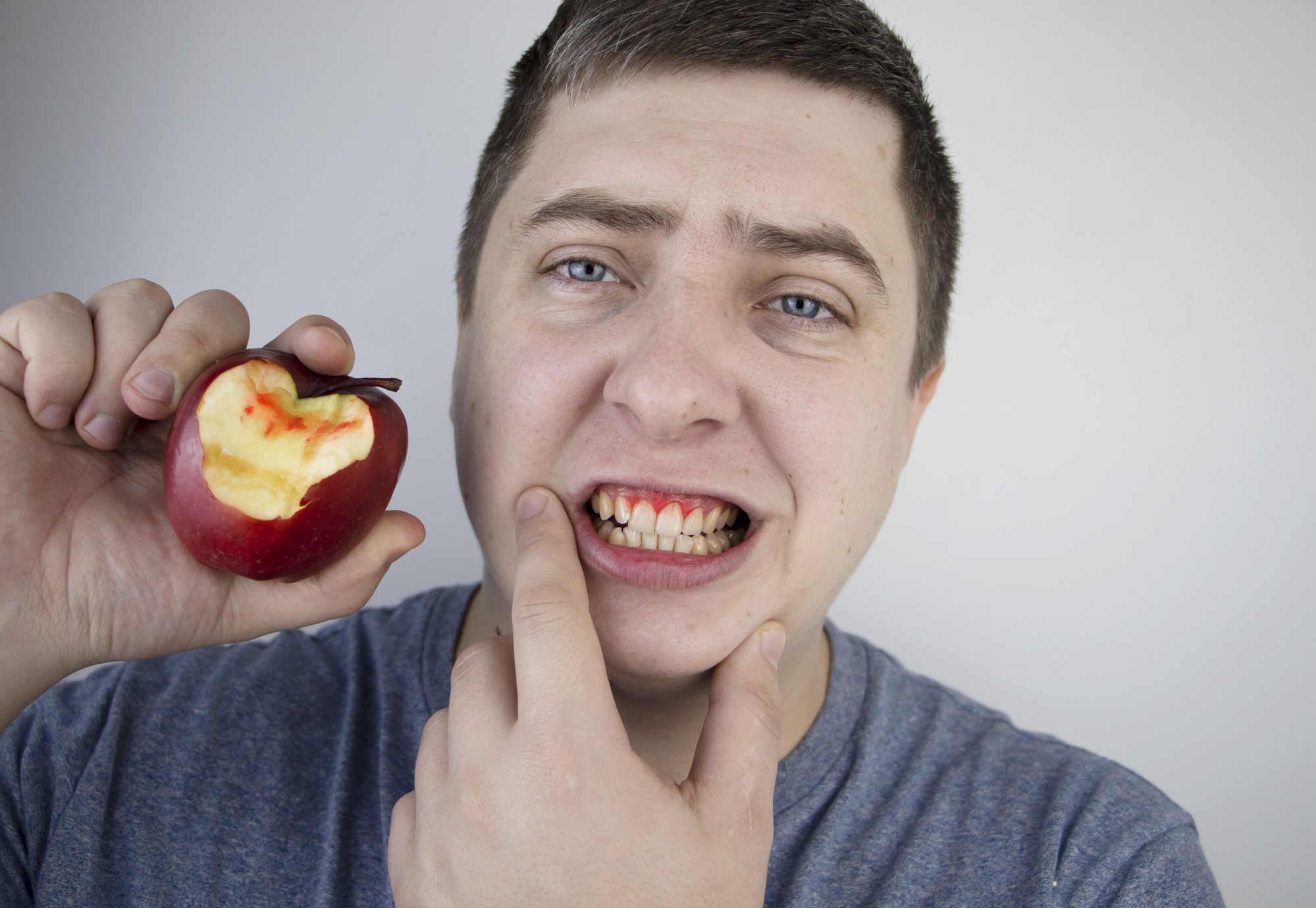Imagine you’re halfway through your morning routine, brushing your teeth, when you notice a hint of pink in the sink. You’re not alone; many people experience bleeding gums, but it doesn’t have to be an essential part of your day. By selecting a toothbrush with soft bristles and the right seal of approval, you’re taking the first vital step toward healthier gums. However, the journey doesn’t stop there. From mastering the perfect brushing technique to understanding the pivotal role of diet and regular dental check-ups, there’s much to explore. Let’s uncover how these steps can transform your oral health routine and why skipping any could mean missing out on an important defense against gum bleeding.
Key Takeaways
- Use a toothbrush with soft bristles to prevent gum irritation.
- Master the correct brushing technique, using gentle circular motions at a 45-degree angle to the gums.
- Incorporate daily flossing to remove plaque and debris between teeth, reaching areas your toothbrush can’t.
- Eat a balanced diet rich in vitamin C and K for strong, healthy gums and to promote natural plaque removal.
- Schedule regular dental visits for professional cleanings and personalized oral care advice to monitor and maintain gum health.
Choosing the Right Toothbrush
Selecting the appropriate toothbrush is an essential part of the whole routine of preventing your gums from bleeding during your brushing routine. To master this initial phase in safeguarding your oral health, you’ll want to prioritize a toothbrush with soft bristles. These gentle warriors are key to avoiding gum damage while still ensuring a thorough cleanse. Look for the ADA seal of approval on your toothbrush—it’s your golden ticket to quality and effectiveness in gum damage repair and prevention.
Moreover, considering an electric toothbrush could elevate your oral hygiene game. Equipped with soft bristles, these devices offer a consistent, essential cleaning experience, minimizing the risk of irritations that lead to bleeding gums. Remember, a small toothbrush head is your ally in reaching the nooks and crannies of your mouth, ensuring no area is left behind in your quest for oral cleanliness.
Lastly, don’t forget to replace your toothbrush every 3 to 4 months, or sooner if the bristles show signs of wear. This isn’t just about maintaining oral hygiene; it’s about ensuring your gums aren’t subjected to outdated tools that could compromise your efforts in gum health. Taking these steps places you on the path to mastery in preventing bleeding gums.
Proper Brushing Technique
Mastering the correct brushing technique is essential for keeping your gums healthy and preventing them from bleeding. With the right approach, you’ll not only tackle gum bleeding but also enhance your overall oral hygiene. Start by selecting a soft-bristled toothbrush; it’s your best ally against gum irritation. These brushes are gentle yet effective at plaque removal, ensuring your gums aren’t subjected to unnecessary stress.
When you brush, hold your toothbrush at a 45-degree angle towards the gum line. This position is strategic for gum line cleaning, allowing the bristles to gently massage and clean the area without causing harm. Use gentle strokes, moving the brush in a circular motion rather than a back-and-forth sawing action. This method is pivotal in minimizing gum bleeding, as aggressive brushing can lead to more harm than good.
The Importance of Flossing
Amid the layers of your oral care routine, flossing is the next step for preventing gum disease and hopefully, ensuring your gums remain healthy. You might wonder how something as straightforward as a thin string of a water flosser can be so important. Yet, daily flossing is your secret weapon against the tiny invaders hiding between your teeth, plotting to compromise your gum health.
Flossing doesn’t just complement your brushing; it completes it. While your toothbrush works hard to clean the surfaces of your teeth, the floss gets into the hard-to-reach areas, removing plaque and food particles that your brush can’t reach. This not only prevents gum irritation but also keeps gum disease at bay.
But it’s not just about running any floss between your teeth; it’s about adopting the proper flossing technique. Gently sliding the floss up and down, curving it around each tooth, ensures that you’re not just going through the motions but are actively contributing to your excellent oral hygiene.
Incorporating flossing into your daily routine might feel like an extra step, but it pays dividends in maintaining your gum health and preventing gum disease. So, embrace it as the unsung hero of your oral hygiene routine, and give your gums the care they deserve.
Eating for Gum Health
While you are focusing on flossing to remove hidden plaque, don’t overlook how your diet influences gum health. To master the art of maintaining healthy gums, you need to feed them well. Integrating vitamin C-rich foods such as oranges, strawberries, and kiwi into your daily intake isn’t just a treat for your taste buds; it’s a boon for your gums too. Vitamin C is the unsung hero that supports collagen production, keeping your gums robust and resilient against bleeding.
Don’t stop at vitamin C; your gums crave vitamin K as well, found abundantly in leafy greens like spinach and kale. This nutrient is like the superhero of blood clotting, stepping in to prevent those alarming red tinges in the sink post-brushing. Additionally, maintaining a balanced diet goes beyond just adding the good stuff. It requires the savvy avoidance of sugary and starchy villains that invite plaque buildup and usher in gingivitis.
For the crunch enthusiasts, chomping on carrots and celery not only satisfies your snack cravings but also serves as nature’s toothbrush, scrubbing away potential plaque without a lecture on flossing efficiency. Remember, your path to preventing gum bleeding is not just about what you remove, but also about what you include in your diet.
Regular Dental Visits
Regular dental visits play a pivotal role in the early detection and prevention of gum disease, ensuring your oral health remains excellent. To truly master your oral care routine and prevent gum bleeding, embracing the importance of these check-ups is non-negotiable. Dentists don’t just peer into your mouth to spot cavities; they’re your allies in the fight against gum disease, offering personalized advice based on the unique traits of your mouth.
| Benefit | Description | Impact on Oral Health |
|---|---|---|
| Early Detection | Spotting gum issues before they escalate | Prevents advanced gum disease |
| Personalized Advice | Tailored recommendations for your specific oral care needs | Enhances effectiveness of daily routine |
| Professional Cleanings | Removal of plaque and tartar that daily brushing can’t conquer | Reduces chances of gum bleeding |
| Monitor Changes | Tracking the evolution of your gum health over time | Allows for timely adjustments in care |
| Preventive Measures | Guidance on additional steps to fortify gums against bleeding | Strengthens oral health foundation |
Frequently Asked Questions
How Do You Stop Your Gums From Bleeding When You Brush?
To stop your gums from bleeding when you brush, you’ve gotta change your game. First, ditch that hard-bristled toothbrush for a softer sidekick. Gentle, circular motions are your new best friend, not the aggressive back-and-forth. Don’t skip flossing; it’s key for catching what your brush misses. Amp up your diet with vitamin-rich foods for stronger gums and hit up your dentist twice a year. These tweaks can turn the tide on bleeding gums.
What Is the Best Solution for Bleeding Gums?
You’re wondering about the best solution for bleeding gums. It’s not just about slapping on any toothpaste. Using a soft-bristled toothbrush and adopting the right brushing technique are key. Don’t skip flossing; it’s your secret weapon against hidden nasties. Amp up your diet with vitamin-rich foods, and don’t ghost your dentist—regular check-ups are a must. If you’re doing all this and still see red, it’s time to chat with your dentist.
How Do Dentists Stop Bleeding Gums?
Dentists are like gum detectives; they pinpoint the culprit behind your bleeding gums, whether it’s gum disease or sloppy brushing habits. Armed with expertise, they might recommend a special toothpaste or mouthwash, wield their tools for a plaque-busting cleaning, or even suggest treatments like scaling for more serious cases. Regular visits let them keep an eye on your gum health, ensuring those pesky bleeding issues are stopped in their tracks.
How Do You Stop Bleeding in the Mouth?
To stop bleeding in your mouth, you’ve got a few tricks up your sleeve. Rinse with hydrogen peroxide or warm salt water to kill bacteria and reduce inflammation. Pressing gauze on the bleeding area helps a lot, too. If swelling’s the issue, an ice pack can be your best friend. And don’t overlook natural remedies like aloe vera or turmeric paste; they’re not just for smoothies but can soothe your gums as well.
Conclusion
In the journey to a bleeding-free smile, think of your oral hygiene routine as tending a delicate garden. Choosing the right toothbrush, mastering the gentle art of brushing, weaving the floss between your teeth like skilled hands in soil, nourishing your body with the right foods, and visiting the dentist are your tools for cultivation. Together, they keep the garden of your gums flourishing, warding off the weeds of gum disease, and ensuring your smile blooms healthily all year round.


